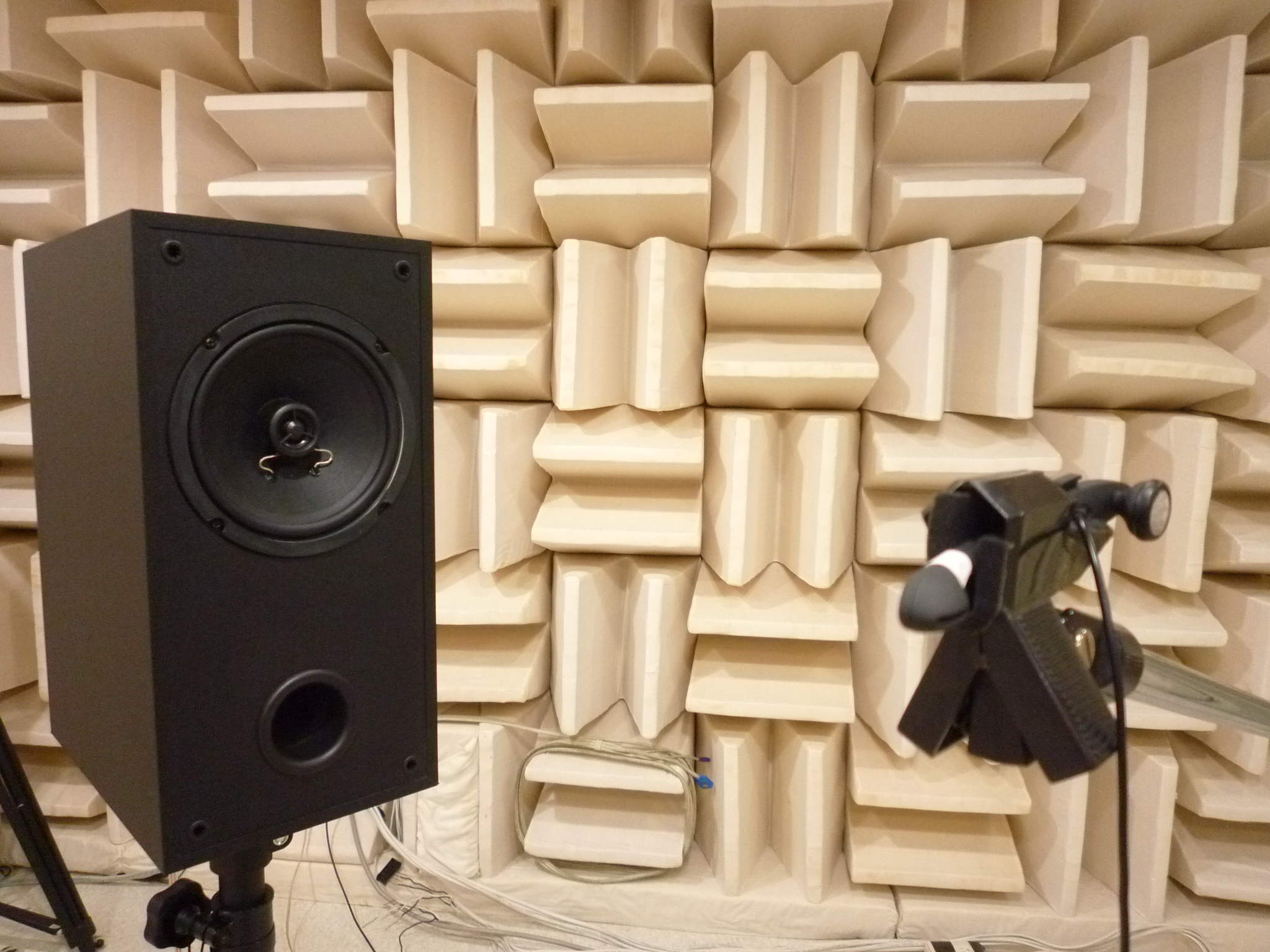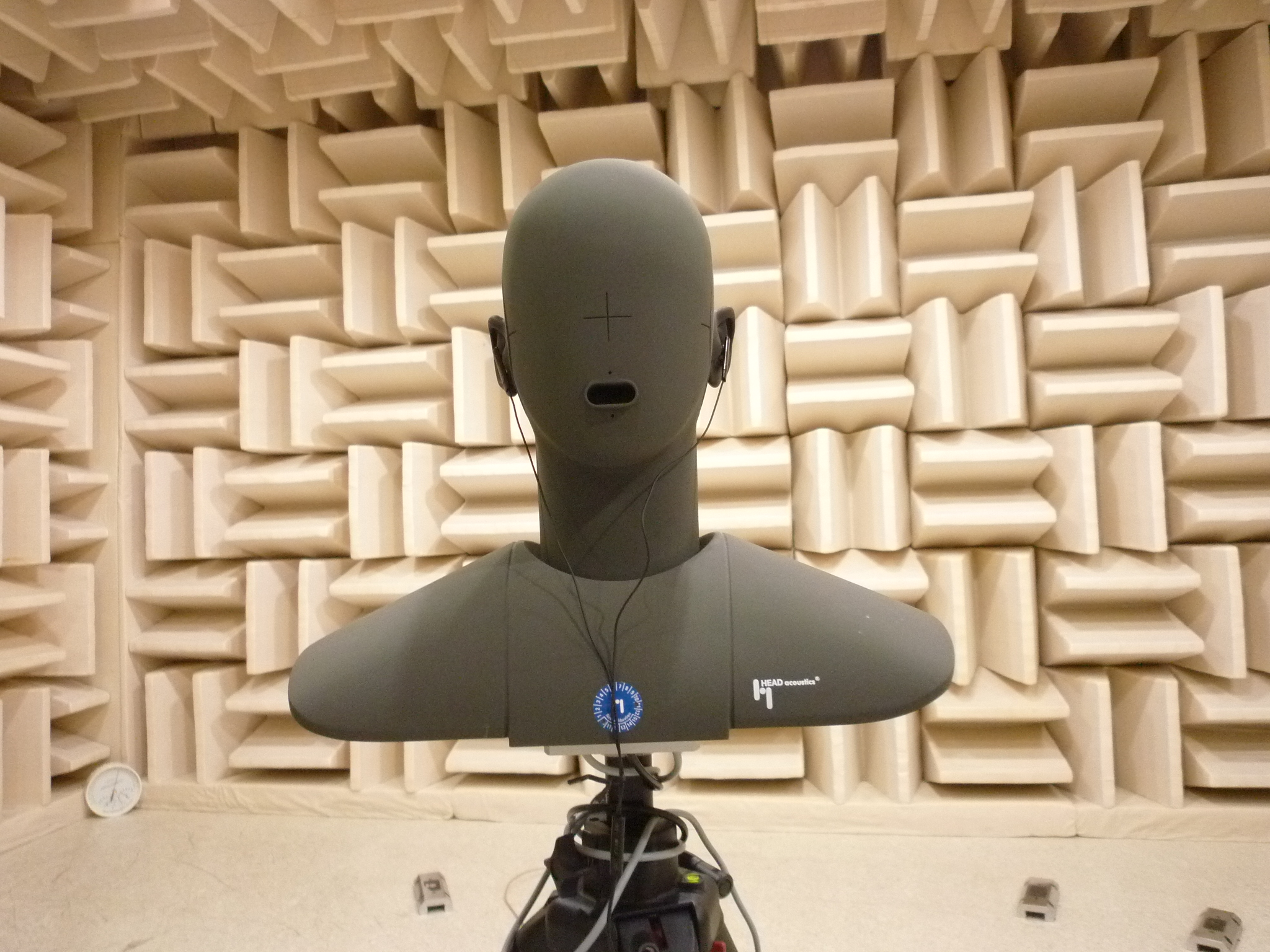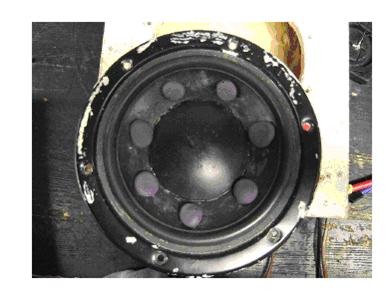
- Noise & Vibration Test
- Microsoft Teams Certification
- Zoom Certification
- Google Meet Certification
- Amazon Alexa Certification
- Google Assistant Test
- Microsoft Cortana Test
- Electro-acoustic Device Performance Test
- EN 50332 Maximum Sound Pressure Test
- MOS-LQO
- Architecture & Room Acoustics
- USI Stylus Certification
Electro-acoustic Device Performance Test Service
About “Electro-acoustic Device Performance Test Service”

Electro-acoustic components can be divided many groups, consisting of radiator such as loudspeaker, headphone, and earphone; receiver such as microphone, hearing aids; and combination of radiator and receiver, like headset or group speakerphone for conference. However, despite of which groups they fall , it is always important to have proper objective information of these products for manufactures making audio equipments, not only for seeking the possibilities to improve the performance, but also for helping clients or end-user to choose the devices they need. To obtain the acoustic characteristics, a series of audio tests must be conducted with high reliability and repeatabiliry, including frequency response, sensitivity, efficiency, linearity, directivity, and distortions. The measurements can be roughly distinguished as the ones for radiators and the ones for receivers. The common used characteristics are tabled as follows and details are given after the table.
|
Radiator |
Receiver |
|
Frequency response |
Frequency response |
For The Acoustic Characteristic of Radiator and Receiver

i. Frequency response – For radiators, the test is performed with fixed distant from the radiator under test to the reference microphone and the radiator under test is fed with fixed voltage (rms) or power, within specific frequency range, commonly 20 Hz to 20 kHz. If the test environment is a hemi-anechoic chamber, a baffle in accordance with IEC standard must be used. As for receivers, the frequency response can be interpreted similarly with the ones of radiators; however, the effect of the reference radiator must be considered since it is more difficult to have flat response, or removed as long as it is applicable. Deviation of frequency response is commonly employed for receiver, for example: 20-20kHz ± 3dB.
ii. Sensitivity – This parameter shows how easily or difficultly the radiators are driven, which is defined as the sound pressure level measured at certain distance with rated input while it is fed with one or more specified frequencies. For instance, 92 dB SPL @ 1Watt / 1 m. As for receivers, the sensitivities show the relationships between the resultant voltage and the actual received sound pressure with fed signal, mostly pure tone. The unit is usually V/Pa or mV/Pa.
iii. Efficiency – Efficiency and sensitivity are not the same things! It is defined as the ratio of output power to the input power. Typical loudspeakers have efficiency of 0.5% to 4%.
iv. Impedance – The impedance is often of interest since it influences the rated input electric power with fixed input voltage. The magnitude of impedance is defined as the ratio of the voltage to the current. The most common impedances of loudspeaker are 4Ω and 8Ω.
v. Directivity – The loudspeaker may sounds very differently while one faces it with certain angle, comparing to the case of facing it directly. This is because most of the loudspeakers are not ideally point sound sources, that is, they do not radiate equal sound waves for each angles, especially for high frequencies. Therefore, the directivity of a radiator is often of interest. Polar response diagram is the commonest way to express the directivity. In addition, the Directivity Index (DI) is also used to describe this characteristic. As for microphones, the directivities indicate how sensitive the microphone is at every incident angle with respect to on-axis incidence. Cardioid polar pattern is one of the most common polar patterns.
vi. Maximum SPL – For speaker, it is the highest sound pressure level which it can achieve fed with fixed rated electrical power input at fixed distance and the distortion must be acceptable. As for microphone, that will be the highest sound pressure level that a microphone can detect with rated THD. Usually, higher value of Maximum SPL of a microphone is preferred despite it may cause higher self-noise.
vii. Noise floor – It is the electrical noise generated by microphone itself, the analyzer and the other devices of the measurement system, which is received by the analysis software while any other sounds are absent. It will be regarded as incident sound no matter if there are external noises or not; therefore a sound with SPL lower than noise floor is impossible to be measured.
viii. Dynamic Range – The difference between maximum SPL and noise floor, usually expressed in dB(re. 20μPa).
ix. Distortion – There are two classes of common distortions for loudspeakers: harmonic distortion and modulation distortion. As for harmonic distortion, Total Harmonic Distortion (THD) is the most familiar parameter to estimate the level of distortion, which is usually in the unit of “%”, sometimes in “dB“thought. On the other hand, Modulation Distortion is not as popular as THD; however, it is an important component of nonlinearities and it will severely influence its performance with the presence of modulation distortion.
x. Thiele/Small Parameters – Thiele/Small Parameters is a set of electromechanical parameters which characterize the driver of a loudspeaker. The most common parameters are :
Fs : Resonant frequency of driver
Vas : Volume of air
Re : DC electrical resistance of voice coil
Qms : Mechanical Q of driver
Qes : Electrical Q of driver
and etc.
With the knowledge of these parameters, it is possible to simulate the performance of the speaker with box using simulation software.

What Can PAL Provide?
Many audio device manufactures make great products but due to the short of budget, they cannot have their own lab to testify how good they are. That is what PAL is here for.
We provide professional audio test services that conformed to IEC-60268 standards. The acoustic characteristic of electro-acoustic components shown in last section could be tested by PAL. In addition, due to abundant expertise in the filed of acoustic, PAL also provides consultant service during the tests, and it is free as long as you are our customers.
Test Fee and Quotation
If you are interested in our electro-acoustic test services or have any question about, please feel free to contact with PAL’s sales representative,
E-mail: sales@pal-acoustics.com Phone: 886-2-26272515
